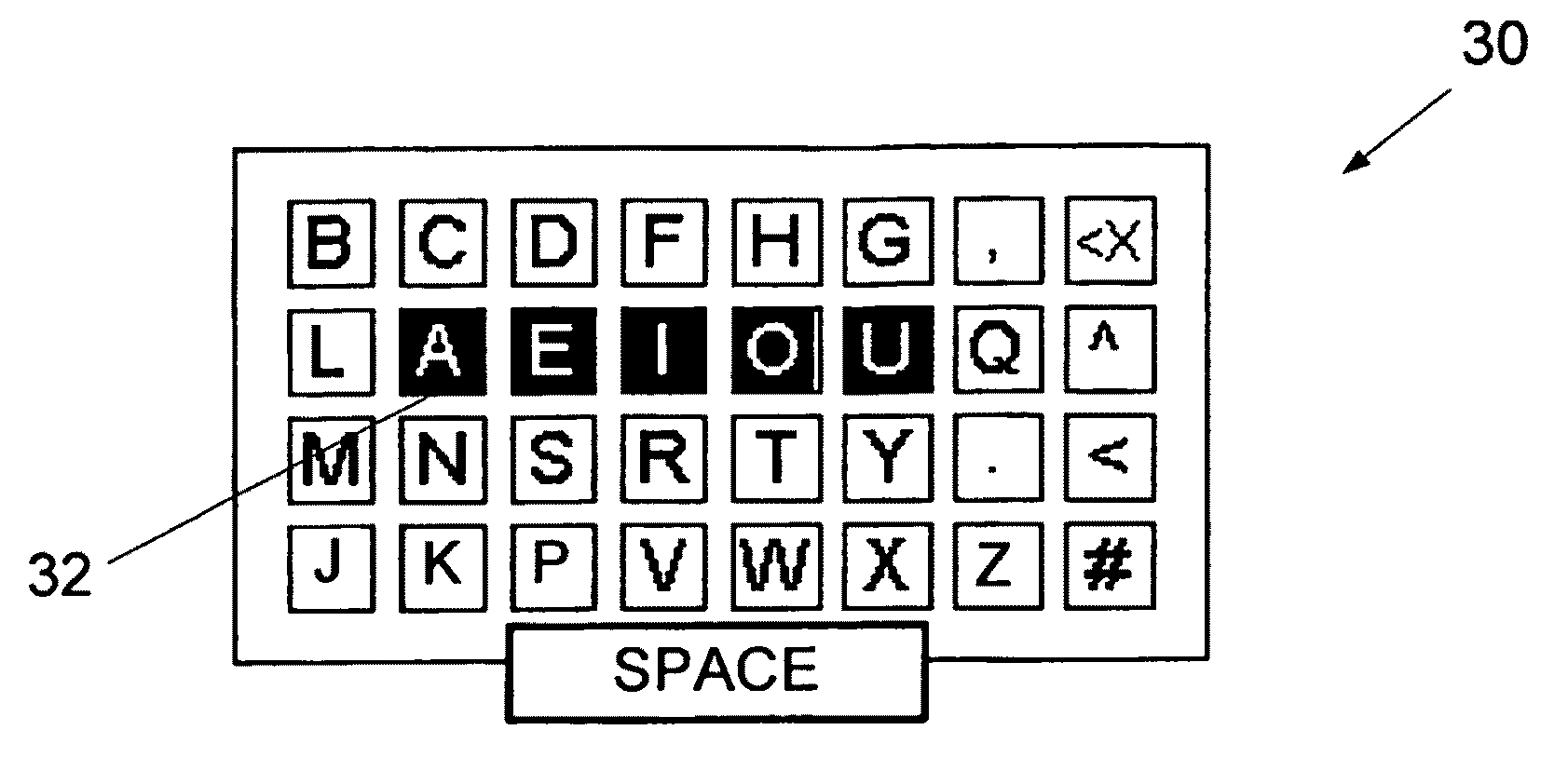Keyboard for a handheld computer device
a computer device and keypad technology, applied in the direction of other printing devices, printing, instruments, etc., can solve the problems of limiting the potential use of such devices, qwerty layout, and imposing significant difficulties on users of small computer devices
- Summary
- Abstract
- Description
- Claims
- Application Information
AI Technical Summary
Benefits of technology
Problems solved by technology
Method used
Image
Examples
Embodiment Construction
[0049]The array of character keys 10 shown in FIG. 1 represent a set of input keys of a keyboard of a handheld computer device (not shown). The array of character keys 10 includes vowel keys 12 for the vowel characters of the English language arranged side by side, in alphabetical order, across a generally central row of the array of character keys 10. The array of character keys 10 also includes commonly used consonant keys 14 (also referred to as most frequent consonant keys). The commonly used consonant keys 14 are arranged adjacent the vowel keys 12. Less commonly used consonant keys 16 (also referred to as less frequent consonant keys) are arranged adjacent the common consonant keys 14. The position of the less commonly used consonant keys 16 reduces interference with the more frequently used consonant-vowel character combinations.
[0050]The handheld computer device may be any device having data processing capabilities and which allows the input of language characters or alphanu...
PUM
 Login to View More
Login to View More Abstract
Description
Claims
Application Information
 Login to View More
Login to View More - R&D
- Intellectual Property
- Life Sciences
- Materials
- Tech Scout
- Unparalleled Data Quality
- Higher Quality Content
- 60% Fewer Hallucinations
Browse by: Latest US Patents, China's latest patents, Technical Efficacy Thesaurus, Application Domain, Technology Topic, Popular Technical Reports.
© 2025 PatSnap. All rights reserved.Legal|Privacy policy|Modern Slavery Act Transparency Statement|Sitemap|About US| Contact US: help@patsnap.com



